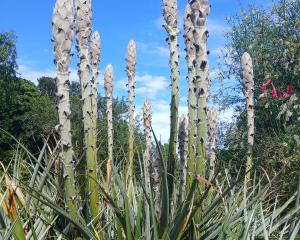
After so much cold, wet weather, a bit of gold wouldn't go amiss.
My garden's doing its best, but I've picked all the Soleil d'Ors to have a bit of colour and scent indoors and the yellow polyanthus I planted in autumn have buds that refuse to open.
As for the daffodils, there's a decided shortage of buds.
You can't blame the daffs for sulking, as I moved them into pots last summer because their patch was to be torn up, then I took them out of the pots in autumn and put them into a new bed.
Gold in all its shades adds oomph to the garden and paler shades shine out from a distance, something to bear in mind if you want a display that is visible from the house but some distance from it.
It is, of course, too late to plant daffodils or tulips for this spring but for pure gold, the old King Alfred daffodil is hard to beat and in tulips a good single yellow is Golden Parade, or try the double creamy-yellow Verona, which flowers early.
For summer displays, there is still time to plant perennials.
Our native Maori onion (Bulbinella) deserves to be more widely grown.
There are six species.
The 50cm B. augustifolia is the one found on hills in Otago and Southland but some garden centres stock it, and also B. hookeri, which has bigger leaves and will grow 60cm to 1m.
Both need moist soil that is reasonably well drained.
Plants die down in winter, and pop up again early in spring.
They have bronze foliage and spikes of yellow flowers like mini hot pokers.
Kniphofia also come in gold shades, ranging from mini cultivars at 30cm to the familiar red-hot pokers that flower in late summer.
Roses make a good backdrop in a gold scheme.
Gold Medal fits an Olympic theme but Friesia is probably the best clear bright yellow, while David Austin's Golden Celebration and Happy Child are also attractive.
With day lilies (Hemerocallis), the gardener is spoiled for choice, with plenty of yellow, cream and deeper gold varieties available.
The same is the case with true lilies: Pollyana is a vivid yellow, while softer tones can be seen in Conca d'Or, Asinara and Cherbourg.
A display of dahlias covers the sometimes awkward period between the early summer and autumn flowers.
For autumn, it has to be chrysanthemums, but here I plan to break away from gold.
If I can get it, I want a maroon chrysanthemum called Foxy Valerie.
What better tribute to Valerie Vili could a gardener choose?












